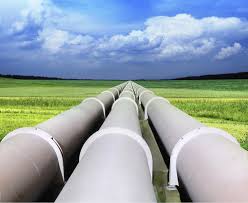
Russia and China have fused at the hip with their mega-gas deal that will pipe $400 billion worth of gas over 30 years. From the WSJ:
“This will be the biggest construction project in the world for the next four years, without exaggeration,” Mr. Putin told reporters.
The deal also called for at least $75 billion in spending on pipelines and other infrastructure on both sides of the Russia-China border.
…By some accounts, China is getting a great deal. RBC Capital Markets analysts said implied terms will give China a steady supply of piped-in Russian gas at a price between 25% and 40% lower than the current cost of importing liquefied natural gas from overseas.
The news could be less advantageous, though, for companies trying to build LNG export plants in the U.S. to ship American natural gas to foreign markets, including Asian buyers.
“The competition may have just got harder,” RBC analyst Peter Hutton said, alluding to the huge chunk of demand that the Russia-to-China pipeline will now satisfy. Globally, Royal Dutch Shell PLC, Chevron Corp. and Eni SpA are among the major energy companies that have proposed LNG export plants but don’t have long-term contracts in place, and may find it tougher to lock in higher prices, Mr. Hutton said.
…China paid about $10 per million British thermal units last year for natural gas piped from its biggest foreign supplier, Turkmenistan, and likely wanted a similar deal with Russia, analysts said. However, that level was below an average price of $12 per million BTUs that Gazprom would need to break even, they added.
Australia’s magnificent seven LNG projects run at a break even between $12 and $14.

